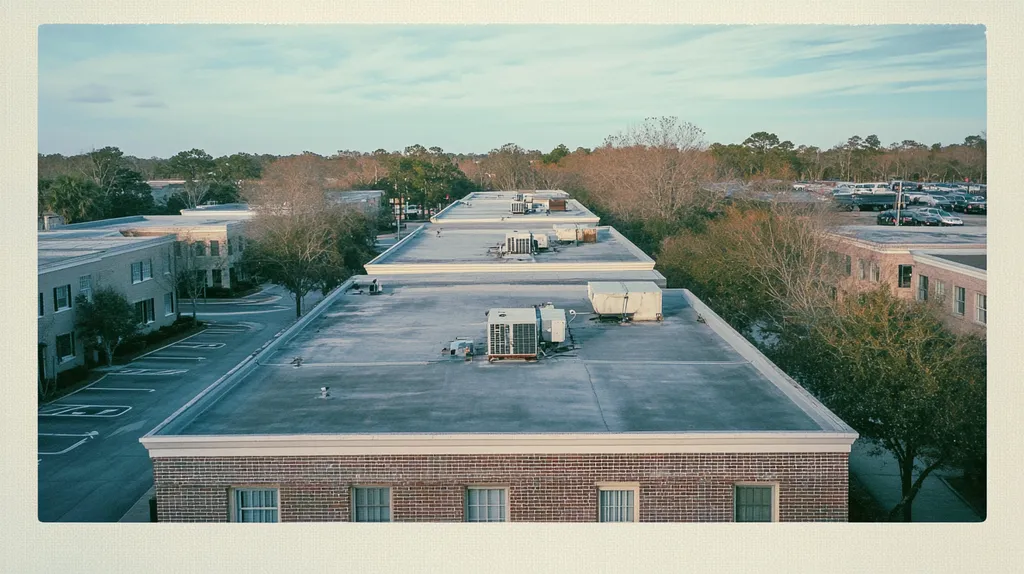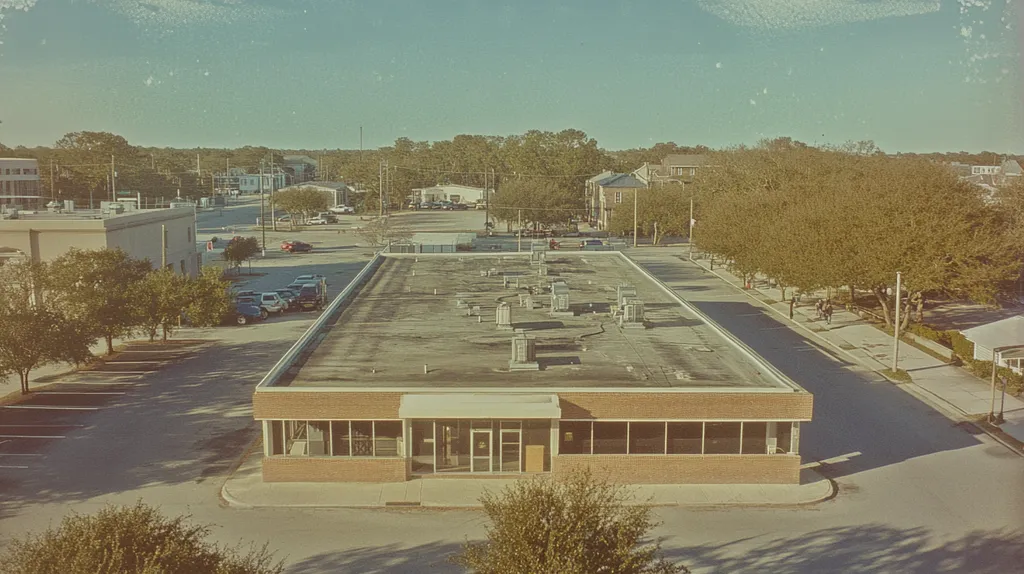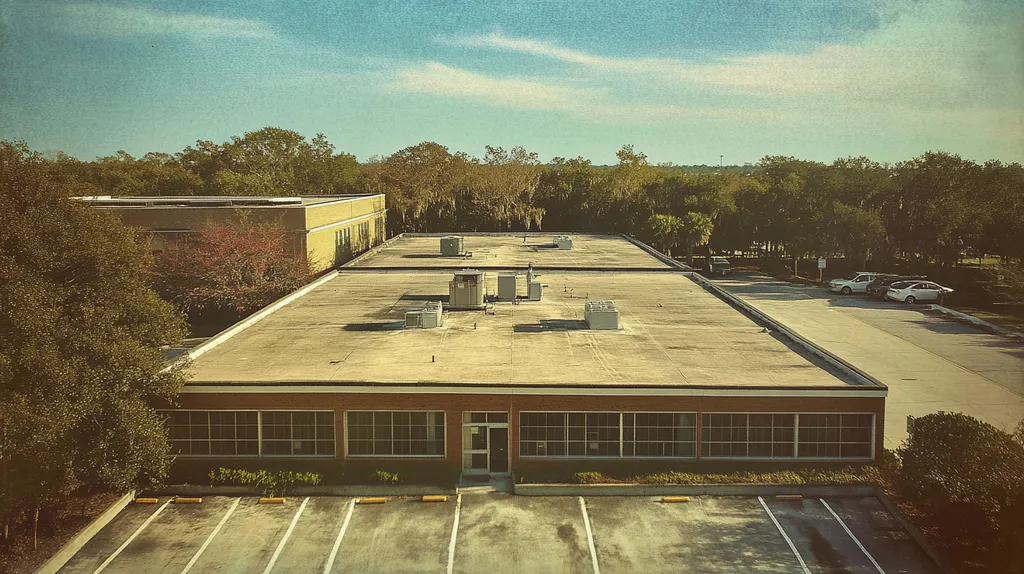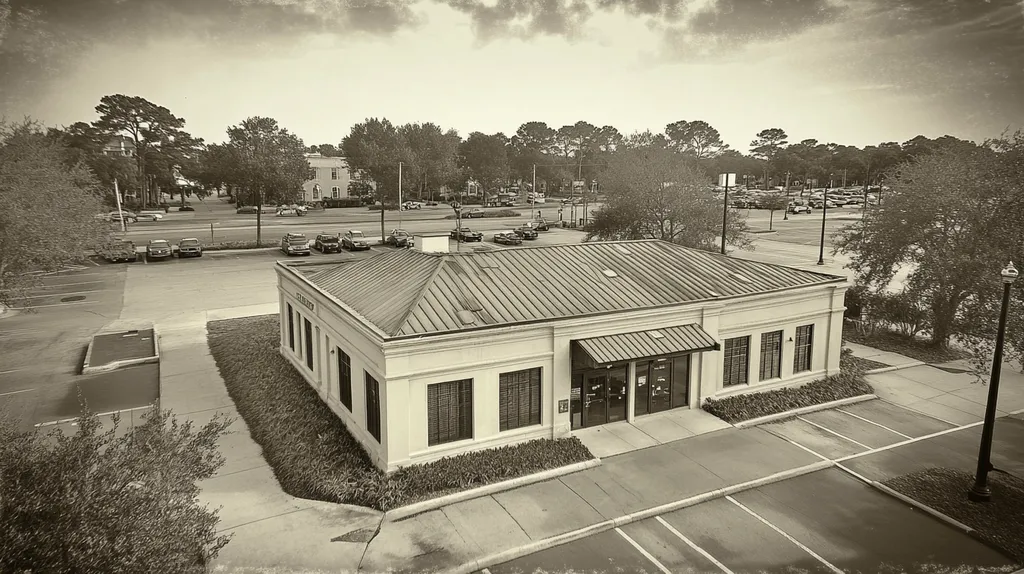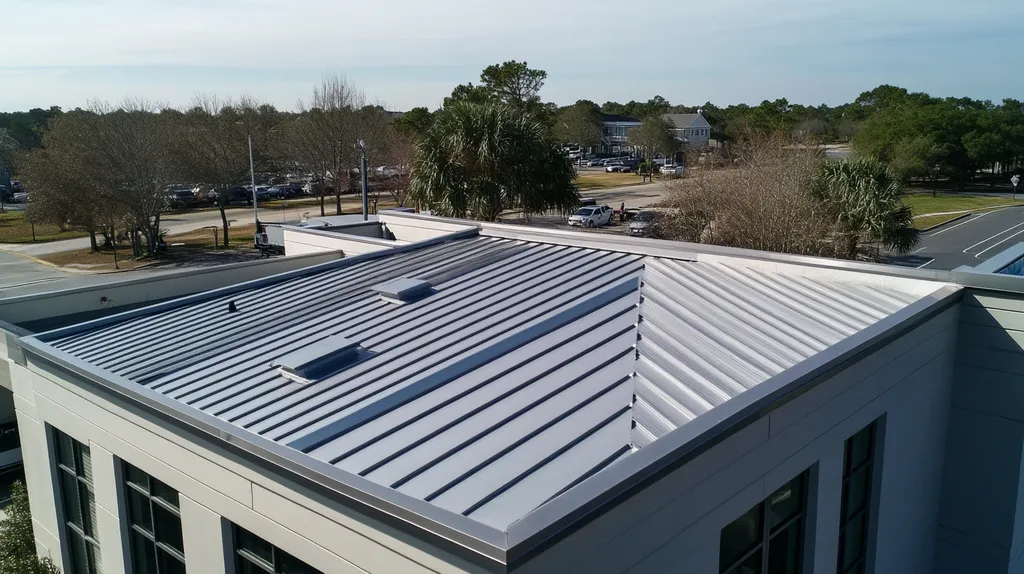Welcome to today’s Battle Royale featuring two roofing heavyweights: “Cool Roof Coatings” in the east corner versus “Living Roof Systems” in the west!
Tonight’s showdown pits these contenders against each other across six punishing rounds designed to test every aspect of their performance for Commercial Roof Aesthetics.
At stake? Millions in potential costs, decades of building protection, and the critical performance demands of modern commercial and industrial facilities.
Our professional judging panel will evaluate each round on technical merit, real-world performance, and value delivery. After all six rounds, we’ll declare our ultimate champion.
Ladies and gentlemen, facility managers and building owners… it’s time to rumble!
ROUND 1: INITIAL COSTS & INSTALLATION
When evaluating commercial roofing solutions, initial investment and installation considerations often become decisive factors that shape long-term success. Property owners must carefully weigh the immediate financial impact against future benefits, particularly when choosing between cool roof coatings and living roof systems.
Understanding the true costs and complexities of each option can prevent budget overruns and installation delays that could impact business operations. Making an informed decision requires careful analysis of materials, labor requirements, and project timelines.
Material Expenses
Cool roof coatings represent the more economical choice for initial material costs, typically ranging from $1.50 to $3.00 per square foot. This accessibility makes them particularly attractive for properties with strict budget constraints or large roof areas requiring coverage.
Living roof systems demand substantially higher material investments, often costing between $10 and $30 per square foot. These systems require specialized growing mediums, drainage layers, root barriers, and carefully selected vegetation suited to local climate conditions.
Green roofs can extend the life of the underlying roof structure by protecting it from UV rays and extreme weather conditions, potentially offsetting their higher initial cost over time. (source: CFisher Construction)
ADVANTAGE: COOL ROOF COATINGS
Installation Complexity
Cool roof coating installation follows a straightforward process of surface preparation, primer application, and final coating. Most projects can be completed with minimal specialized equipment and standard roofing crews.
Living roof systems require extensive preparation, including structural assessment to ensure the building can support the additional weight. Installation involves multiple specialized layers, irrigation systems, and often requires consultation with landscape architects.
The complexity difference significantly impacts labor requirements and the potential for installation complications. Cool roof coatings present fewer variables and technical challenges during the installation process.
ADVANTAGE: COOL ROOF COATINGS
Project Timeline
Cool roof coating projects typically complete within 3-5 days, depending on weather conditions and roof size. This rapid installation minimizes business disruption and allows for quick return to normal operations.
Living roof installation can extend from several weeks to months, requiring careful coordination between multiple specialized contractors. The timeline must also account for vegetation establishment and initial maintenance periods.
Weather sensitivity affects both options, but living roof systems face additional challenges related to optimal planting seasons and vegetation establishment periods.
ADVANTAGE: COOL ROOF COATINGS
ROUND 1 WINNER: COOL ROOF COATINGS
ROUND 2: DURABILITY & LIFESPAN
When evaluating commercial roofing solutions, durability and lifespan directly impact long-term return on investment and building protection. Understanding how different roofing systems perform over time helps property owners make informed decisions that balance immediate needs with future sustainability.
Deterioration rates and maintenance requirements vary significantly between cool roof coatings and living roof systems, making this a crucial consideration for facility planning and budgeting.
Weather Resistance
Cool roof coatings excel in reflecting UV radiation and protecting underlying roofing materials from sun damage. Their reflective properties help reduce thermal cycling, which can extend the life of the roof structure.
However, these coatings may show signs of wear after prolonged exposure to harsh weather conditions. Regular reapplication every 10-15 years is typically necessary to maintain optimal performance.
Living roof systems provide natural insulation and protection against UV radiation, extreme temperatures, and physical impacts. The multiple layers and vegetation create a robust barrier that shields the underlying roof membrane.
ADVANTAGE: LIVING ROOF SYSTEMS
Structural Integrity
Cool roof coatings add minimal weight to existing structures, reducing the risk of structural stress over time. These systems can be easily inspected for damage and repaired without extensive disruption.
Living roof systems require careful engineering to support their substantial weight. While this initial challenge exists, properly designed green roofs can actually protect and extend the life of the underlying waterproof membrane.
The vegetation and growing medium provide additional protection against physical damage and environmental stressors, potentially doubling the lifespan of the roof structure.
ADVANTAGE: LIVING ROOF SYSTEMS
Maintenance Requirements
Cool roof coatings need periodic cleaning and occasional touch-ups to maintain their reflective properties. Maintenance typically involves simple washing and spot repairs that can be performed by standard maintenance crews.
Living roof systems demand more intensive ongoing care, including irrigation, weeding, and plant management. These systems require specialized knowledge and regular professional maintenance to ensure proper function and longevity.
While both options need regular maintenance, cool roof coatings present a more straightforward and less resource-intensive maintenance program. Eco-friendly roofing options can enhance curb appeal through their unique designs, but maintenance requirements significantly impact their long-term success. (source: Southern Roofing Co.)
ADVANTAGE: COOL ROOF COATINGS
ROUND 2 WINNER: LIVING ROOF SYSTEMS
ROUND 3: PERFORMANCE FACTORS
Performance factors can make or break a commercial roofing investment, directly impacting operational costs and tenant satisfaction. With energy expenses continuing to rise and climate regulations becoming stricter, choosing the right roofing system has never been more critical for property owners.
Modern commercial buildings demand roofing solutions that balance energy efficiency with practical functionality. Understanding key performance metrics helps facility managers make decisions that will benefit their properties for decades to come.
Energy Efficiency
Energy efficiency remains a top priority for commercial property owners facing rising utility costs. Cool roof coatings excel in this area, reflecting up to 85% of solar radiation and reducing roof surface temperatures by 50-60 degrees Fahrenheit during peak summer conditions.
These coatings maintain their reflective properties with minimal maintenance, providing consistent energy savings throughout their lifespan. Performance typically remains stable for 10-15 years before requiring reapplication.
Living roof systems offer different energy benefits through natural insulation and evaporative cooling. While effective, their performance can vary significantly based on vegetation health, seasonal changes, and maintenance quality.
ADVANTAGE: COOL ROOF COATINGS
Environmental Impact
Cool roof coatings contribute to environmental sustainability by reducing building energy consumption and urban heat island effects. Their application produces minimal waste and requires few resources compared to traditional roofing solutions.
Living roof systems deliver superior environmental benefits by supporting biodiversity, managing stormwater runoff, and improving air quality. These systems can absorb up to 80% of rainfall, significantly reducing strain on municipal drainage systems.
While both options offer environmental advantages, living roof systems provide a broader range of ecological benefits that extend beyond energy efficiency alone.
ADVANTAGE: LIVING ROOF SYSTEMS
Climate Resilience
Cool roof coatings perform consistently across various weather conditions but may show reduced effectiveness during extended cloudy periods or in regions with high precipitation. Their primary strength lies in managing heat load during sunny conditions.
Living roof systems demonstrate remarkable adaptability to different climate challenges. Their natural structure helps buffer against temperature extremes, high winds, and intense rainfall events.
The biological components of living roofs can actually strengthen over time as vegetation establishes deeper roots, while cool coatings gradually degrade with exposure.
ADVANTAGE: LIVING ROOF SYSTEMS
ROUND 3 WINNER: LIVING ROOF SYSTEMS
ROUND 4: MAINTENANCE REQUIREMENTS
Maintenance requirements can make or break a commercial roofing investment, directly impacting both short-term costs and long-term performance. Property owners who underestimate ongoing maintenance needs often face premature system failures and unexpected expenses that could have been prevented.
Understanding the distinct maintenance profiles of cool roof coatings and living roof systems is crucial for making an informed decision that aligns with available resources and operational capabilities.
Regular Inspection Requirements
Cool roof coatings demand relatively simple inspection protocols, typically requiring bi-annual professional assessments to check for coating degradation and surface integrity. These inspections can often be combined with routine roof maintenance schedules.
Living roof systems require monthly inspections during growing seasons to monitor plant health, irrigation effectiveness, and drainage performance. These specialized inspections must be conducted by professionals with horticultural expertise.
The significant difference in inspection frequency and complexity makes cool roof coatings the more manageable option for most facility managers.
ADVANTAGE: COOL ROOF COATINGS
Cleaning and Preventive Care
Cool roof coatings benefit from quarterly cleaning to maintain optimal reflectivity and performance. Simple pressure washing and debris removal typically suffice, tasks that can be handled by regular maintenance staff.
Living roof systems demand continuous attention to weeding, pruning, and plant replacement. Irrigation systems require regular monitoring and adjustment based on seasonal needs and weather patterns.
The intensive nature of living roof maintenance creates additional complexity and resource demands that many facilities struggle to meet consistently.
ADVANTAGE: COOL ROOF COATINGS
Long-term Care Considerations
Cool roof coatings require periodic reapplication every 10-15 years to maintain optimal performance. This process is straightforward and can be scheduled during low-impact periods for building operations.
Living roof systems involve ongoing soil management, root barrier inspection, and periodic replanting of vegetation. These systems demand specialized knowledge and equipment for proper long-term care.
While both systems require long-term maintenance planning, cool roof coatings present more predictable and manageable care requirements.
ADVANTAGE: COOL ROOF COATINGS
ROUND 4 WINNER: COOL ROOF COATINGS
ROUND 5: SUSTAINABILITY CREDENTIALS
In today’s climate-conscious market, sustainability credentials have become critical differentiators for commercial roofing solutions. Property owners face increasing pressure from regulations, investors, and tenants to demonstrate meaningful environmental commitments through their building systems.
Understanding how different roofing options contribute to sustainability goals helps decision-makers align their infrastructure investments with long-term environmental requirements while maintaining operational efficiency.
Material Recyclability
Cool roof coatings typically consist of acrylic or silicone-based materials that pose challenges for end-of-life recycling. While the materials themselves are relatively inert, current recycling infrastructure rarely accommodates these specialized coating compounds.
Living roof systems incorporate naturally recyclable components including soil media, plant material, and drainage layers. These materials can be readily composted or repurposed when the system reaches end-of-life.
The biodegradable nature of living roof components provides significant advantages in waste reduction and material lifecycle management.
ADVANTAGE: LIVING ROOF SYSTEMS
Energy Efficiency
Cool roof coatings deliver exceptional solar reflectance, typically reflecting 80-90% of incoming solar radiation. This dramatically reduces cooling loads during peak summer conditions when energy costs are highest.
Living roof systems provide natural insulation through soil mass and plant coverage, reducing both heating and cooling requirements year-round. The evaporative cooling effect of vegetation adds another layer of passive temperature control.
Both systems offer compelling but different energy efficiency benefits, making this category too close to call.
ADVANTAGE: TIE
Biodiversity Support
Cool roof coatings offer minimal ecological benefits beyond their energy-saving properties. Their smooth, reflective surfaces provide no habitat value or support for local ecosystems.
Living roof systems create vibrant micro-ecosystems that support local flora and fauna. These green spaces provide crucial stepping stones for urban wildlife and help maintain genetic diversity in plant populations.
Green roofs enhance aesthetic appeal while extending roof life through protection from UV rays and extreme weather conditions. (source: CFisher Construction)
ADVANTAGE: LIVING ROOF SYSTEMS
ROUND 5 WINNER: LIVING ROOF SYSTEMS
ROUND 6: SPECIALIZED APPLICATIONS
Specialized applications in commercial roofing demand solutions that balance multiple competing priorities. As building technologies evolve and environmental standards tighten, property owners face increasing pressure to select roofing systems that can adapt to specific use cases while maintaining aesthetic appeal.
Understanding how different roofing options perform in specialized scenarios helps prevent costly mistakes and ensures long-term success. The right choice depends heavily on building use, local climate conditions, and specific operational requirements.
Retrofit Compatibility
Cool roof coatings excel in retrofit applications due to their minimal weight impact and simple installation requirements. These systems can be applied directly over most existing roof surfaces without requiring structural modifications.
Living roof systems present significant challenges for retrofits, often requiring extensive structural reinforcement to support their weight. The complexity of adding proper waterproofing, drainage, and growing medium layers can make retrofits prohibitively expensive.
Metal roofing systems offer durability and customizable design options with moderate installation complexities, while cool roof coatings apply easily over metal and other substrates, minimizing costs. (source: Amazing Architecture)
ADVANTAGE: COOL ROOF COATINGS
Climate-Specific Performance
Cool roof coatings demonstrate exceptional performance in hot, sunny climates where solar reflection provides maximum benefit. However, their effectiveness can diminish in regions with frequent cloud cover or prolonged wet seasons.
Living roof systems show remarkable adaptability across diverse climate zones. Their natural insulation properties provide benefits in both hot and cold conditions, while their ability to manage stormwater proves valuable in high-precipitation areas.
The biological resilience of living roof systems gives them an edge in handling extreme weather events and adapting to changing climate patterns over time.
ADVANTAGE: LIVING ROOF SYSTEMS
Building Use Optimization
Cool roof coatings provide consistent performance regardless of building type or occupancy patterns. Their low maintenance requirements and predictable behavior make them ideal for facilities with limited roof access or maintenance resources.
Living roof systems offer unique advantages for buildings seeking to create usable outdoor spaces or showcase environmental commitments. However, they require regular access for maintenance and may not suit buildings with sensitive operations below.
While both systems offer distinct benefits, cool roof coatings provide more versatile applications across different building types and use cases.
ADVANTAGE: COOL ROOF COATINGS
ROUND 6 WINNER: COOL ROOF COATINGS
AND THE WINNER IS…
After six grueling rounds of technical evaluation, we have our verdict…
In a split decision, with Cool Roof Coatings taking rounds 1, 4, and 6, while Living Roof Systems claimed rounds 2, 3, and 5, we’re declaring this championship match a DRAW!
Cool Roof Coatings dominated the practical categories, showing unmatched strength in cost-effectiveness, maintenance simplicity, and retrofit applications. This contender proves unstoppable for properties prioritizing straightforward installation and predictable performance.
Living Roof Systems flexed impressive muscle in sustainability, durability, and environmental impact. For properties seeking maximum ecological benefits and superior climate resilience, this heavyweight delivers knockout performance.
However, folks, we must emphasize that every building brings its own unique requirements to the ring. Local climate conditions, structural capabilities, and specific property characteristics can dramatically impact performance. This analysis provides general guidance but cannot account for all variables. Property owners should always consult with qualified roofing professionals who can evaluate their specific situation.
Remember, in the high-stakes arena of commercial roofing, the true champion isn’t the system with the most theoretical points – it’s the one that best matches your building’s specific needs and operational goals. Choose your corner wisely!
FREQUENTLY ASKED QUESTIONS
Q. What are the initial costs of a commercial roof?
A. Initial costs vary significantly between cool roof coatings and living roofs. Cool roof coatings are generally more budget-friendly, costing about $1.50 to $3.00 per square foot. In contrast, living roof systems can range from $10 to $30 per square foot due to the specialized materials and installation requirements they involve.
Q. How durable are commercial roofs made from living systems?
A. Living roof systems provide excellent durability due to their layered construction and vegetation. They offer natural insulation and protect the underlying roof membrane from UV damage and physical impacts. While requiring careful maintenance, their lifespan can significantly exceed that of many traditional roofing options.
Q. How do cool roof coatings perform in energy efficiency?
A. Cool roof coatings are highly effective in reflecting solar radiation, potentially reflecting up to 85%. This can significantly reduce cooling costs in hot climates. With regular maintenance, these coatings maintain their energy-efficient properties for about 10-15 years before reapplication is necessary, ensuring long-term cost savings.
Q. What are the regular maintenance needs of living roof systems?
A. Living roof systems require intensive ongoing maintenance, including monthly inspections during the growing season. Tasks such as irrigation management, weeding, and plant health monitoring are essential to ensure the system’s longevity. Specialized knowledge is often required to manage these needs effectively, which can be demanding for facilities.
Q. How sustainable are cool roof coatings?
A. While cool roof coatings offer significant energy savings by reflecting solar radiation, their recyclability after use can be challenging. The materials typically used don’t easily integrate into current recycling systems. In contrast, living roof systems promote sustainability through biodegradable materials that support biodiversity and environmental health.
Q. Are cool roof coatings suitable for all climates?
A. Cool roof coatings perform exceptionally well in hot, sunny climates, maximizing benefits through solar reflection. However, their effectiveness can decline in regions with frequent rain or cooler weather. Properties in these areas may benefit more from living roof systems that offer better climate adaptability and resilience.
Q. Can cool roof coatings be applied over existing commercial roofs?
A. Yes, cool roof coatings are ideal for retrofitting as they can be applied directly over existing roofs. Their lightweight nature and straightforward installation process simplify upgrades without needing structural modifications. This makes them a cost-effective option for property owners seeking to improve energy efficiency.

